

Following are some experiments using videos of flying insects to duplicate the characteristics of composited images taken from Jose Escamilla's "rod" videos.These videos were taken with a Canon ES9000 8mm camcorder forced to 1/60 second exposure. The amount of zoom used varies from about 10x up to the camera's full 20x, depending on the distance to the background trees. (This is because I was attempting to get a fairly dark background across the full frame, not because of the distance to the bugs. The trees range between 50 feet and 200 feet away, and the bugs ranged from about 2 feet away up to perhaps 20 feet or more.)
These pictures show remarkable similarity to Jose Escamilla's "rod" videos. Specifically, when successive images are composited into the same picture, there is a distinctive correlation between the apparent "rod" size and the displacement from one frame to the next: the "rod" always appears to be moving two "rod" lengths per frame. There are also several examples of the waving or "sinusoidal" patterns that can be caused by blurred flapping wings (which makes "rods" appear to have multiple wings or long undulating fins along their sides), and there is an example at the bottom of the page of "paddle-like" wings, like those seen on some of Escamilla's images.
Below, the left two pictures were composited from the same video of a flying bug: The top picture was composited from the first field in a series of frames, and the bottom picture was composited from the second field in each of those same frames. Note that both show the same "bug/gap" pattern seen in most of Escamilla's "rod" images, i.e. gaps between the "rods" that are approximately the same length as the "rods." The picture on the right shows all the fields composited into a single image, and the "rod" has become a continuous streak. (The "rods" are slightly misaligned because of camera motion.)

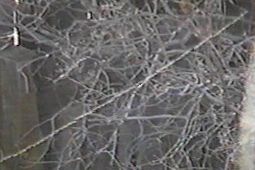
These next two sets also show the results of compositing the first field from each frame or the second field in each frame. In both, we again see the "two lengths per frame" pattern, and again if all the fields were composited into a single image, the "rods" would be continuous streaks.


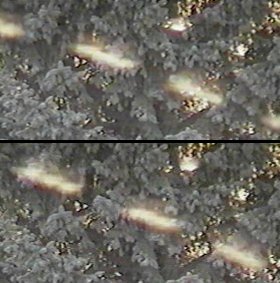
So, when only one field from each video frame is used in the composite, the result is a gap between each "rod" that is about the same length as the "rod." (This appears to be the case in most of the images Escamilla originally posted on roswellrods.com prior to 2000.) When both fields are included, the result is a continuous streak (which is the pattern seen in all of the images taken from the sample of Escamilla's latest DVD). Both of these patterns are simply because the camera is capturing 60 fields per second, and the field exposure time is 1/60th second. All of the "rod" images I have collected from around the Web show one or the other of these two patterns.
For these remaining bug pictures, only one set of fields has been used, but the "bug/gap" pattern is the same for the alternate sets of those fields as well, and again, including all fields would produce a continuous streak.
Following are a few images taken with a JVC GR-DVL505 digital camcorder with the exposure forced to 1/60 second. Again, only one field from each frame has been used, but if all the fields from all frames were composited, the "bug rods" would simply be continuous motion-blurred streaks. 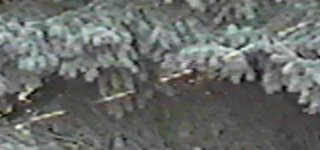




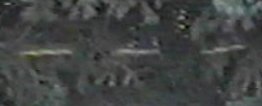
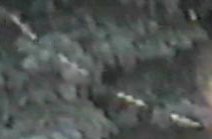
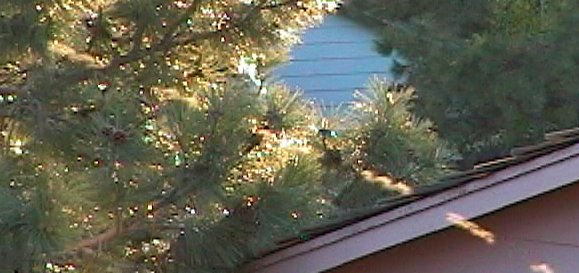

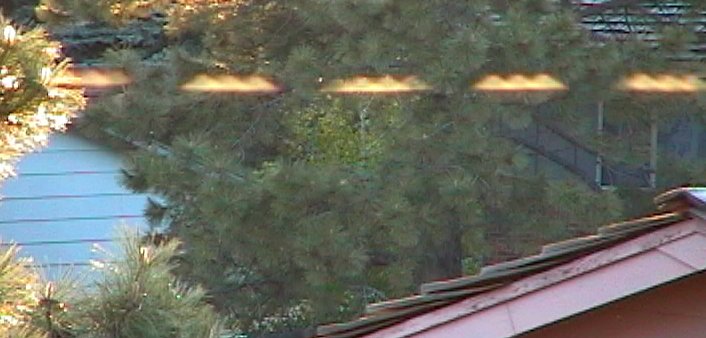
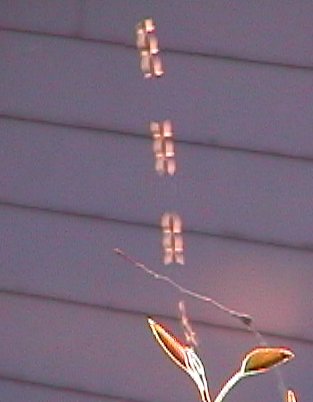

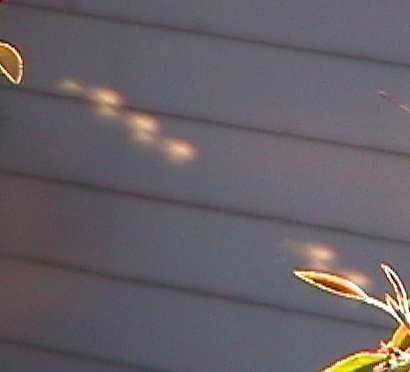
This picture was taken with a digital still camera by Shannon Story, who now has a page on her photograpy site called Hot Rods (now on web.archive.org). She was attempting to take a picture of some insects that had recently appeared in her yard, but she immediately noticed the similarity between these pictures and Escamilla's "rods" that she had seen on TV.
Shannon now has many "rod" pictures on her site, but she says this is the one that convinced her she really was photographing flying bugs. Many of the insects, which have now been identified as Tiphiidae (Tiphiid Wasps), are seen resting on the leaves, while the one in the lower right corner has transformed itself into a "rod" simply by flying.
Comments or questions about this page? Contact Sol Please see these pages for more evidence: